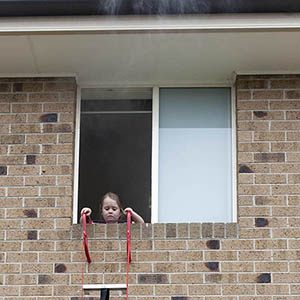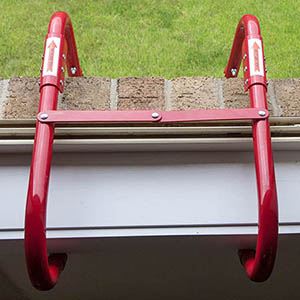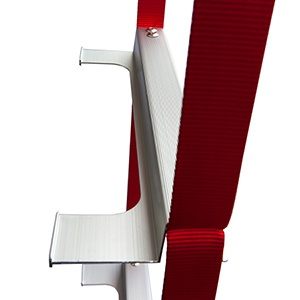
Why emergency evacuation ladders are a must-have for families in multi-storey dwellings
Every home and workplace needs an evacuation plan – and if you live or work in a multi-storey building, you’ll also need to plan how occupants, including children, will escape if the usual exits are blocked. An emergency evacuation ladder provides an affordable and practical solution, transforming almost any upper-storey window into a portable fire escape. And importantly, they can be used to carry children and infants safely to the ground in the event of a fire. This makes them a potentially life-saving emergency tool – and one that every multi-storey home should have.
Choosing Your Escape Ladder

Emergency evacuation ladders are available in a range of sizes – for example, a two-storey ladder is usually around five metres in length, and three-storey ladders around eight metres. Always check the length from your windowsill to the ground before purchasing to be sure you’ve got the right size.
Make sure the escape ladder you choose is strong and sturdy, suitable for older children to descend independently, and also for adults carrying younger children and babies to safely climb down. Your ladder should have anti-slip features and ladder stabilisers, to hold it away from the house so you can get a good toehold. Also, make sure the ladder can carry a minimum of 450kg – this will safely hold two to three adults at a time, plus the same number of children, allowing multiple occupants to evacuate at the same time.
Using Your Escape Ladder

It’s best to test it out before you need to use it in an emergency. Review the manufacturer’s instructions closely and practice setting it up from a first-floor window. Make sure everyone knows how to connect it to the windowsill and lower it down – it sounds simple but every window and ladder have their own unique characteristics and you want to be sure you’ve had a practice run and can operate it without delay.
Smart Storage
Emergency evacuation ladders are compact and easy to store, and they’re best kept close to the window you plan to use it on – under the bed or in a cupboard is ideal. Make sure it’s accessible at all times. Don’t pile boxes on top of it or bury it under clothes – you want it to be easy to reach in an emergency.
Bottom Line
If you live in a multi-story dwelling, having an evacuation plan, plus emergency escape ladders for upstairs bedrooms, gives you and your family the best chance of getting out safely if there’s a fire. Emergency evacuation ladders are affordable, convenient to store and easy to use – and importantly provide a safe escape route – and peace of mind – for you and your family.
What procedures do you have at home? Share with our readers on the EvacuLife Facebook Page


